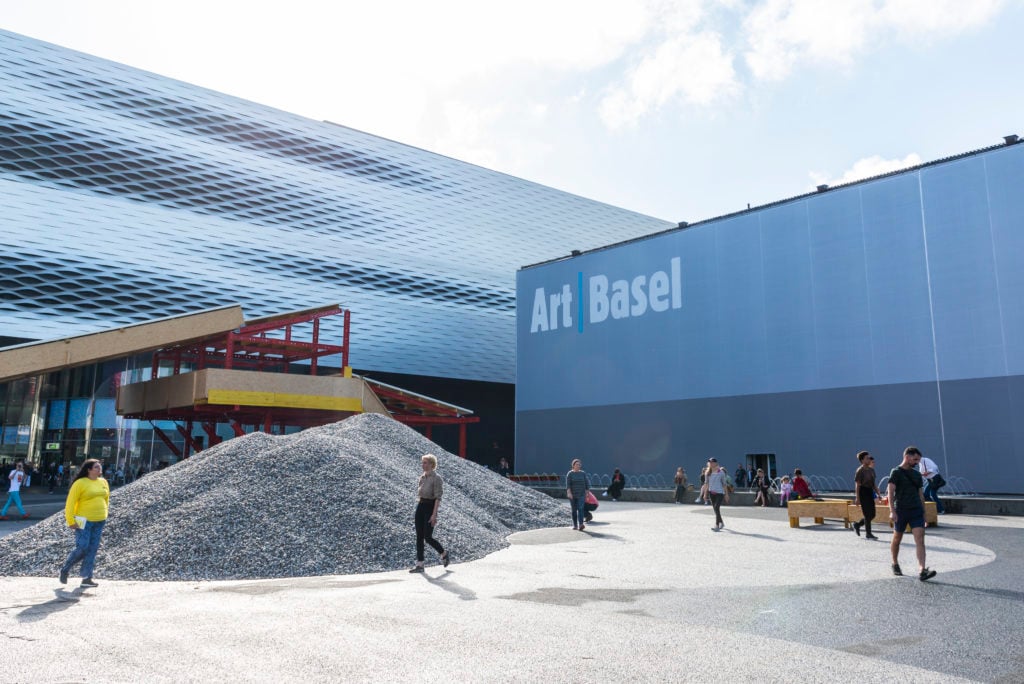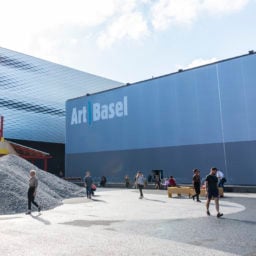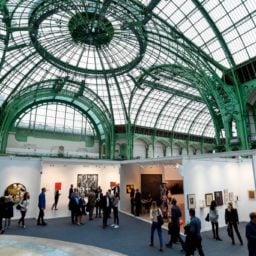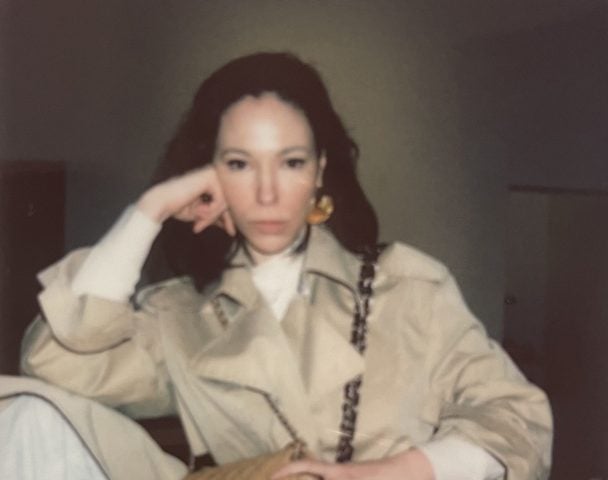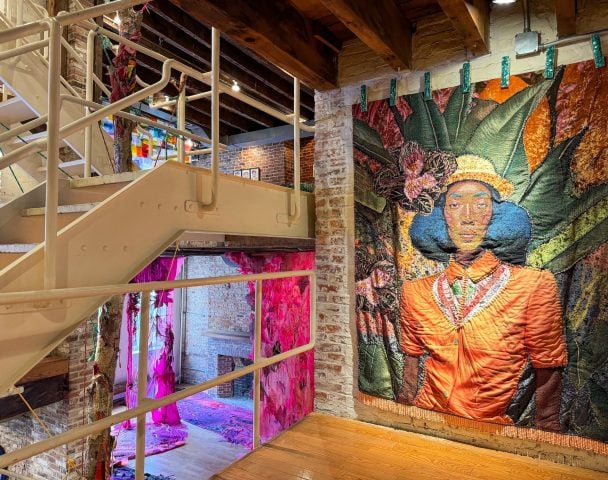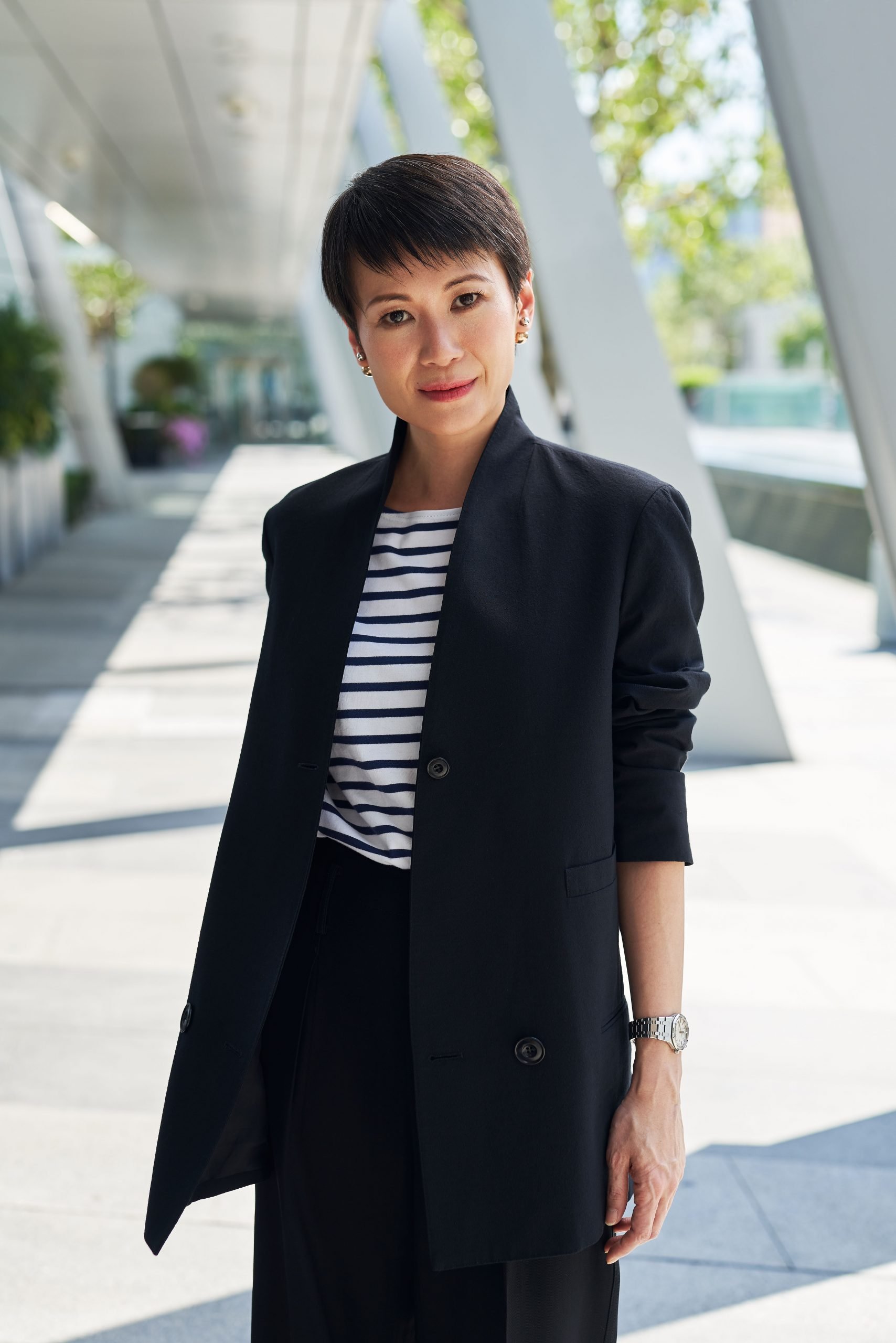With consensus hardening around the concept of a gallery crisis created in no small part by the challenges of art fairs, one of the system’s biggest names has now taken significant action to address it.
Beginning with the organization’s flagship fair in Switzerland in 2019, Art Basel will inaugurate what is effectively a progressive taxation system for exhibitors in its central Galleries section. High-end dealers claiming larger booths will now pay a higher square-meter rate than their younger, on-the-rise colleagues in smaller booths—a sharp break from the current system, in which a flat square-meter rate determines that exhibitors pay more or less solely based on the size of their stand.
Art Basel will also reduce the fees for its Statements and Feature booths, as well as provide two years’ worth of further discounts to exhibitors who graduate from these sections to the main sector upstairs. The price to participate in Statements, a section dedicated to solo projects for emerging artists, will drop from $12,385 (CHF 12,000) to $10,320 (CHF 10,000). Meanwhile, the price for a Feature stand, which presents curated projects from established or historical artists, will decline from $25,800 (CHF 25,000) to $20,640 (CHF 20,000). Finally, sellers new to the Galleries section will receive an additional 20 percent off their square-meter price in year one and 10 percent off in year two.
The new system interrupts Art Basel’s policy of raising its square-meter rate five percent annually to account for rising expenses and higher spending on development. The fair’s global director Marc Spiegler volunteers that the full slate of cost changes will mean that the organization collects no more revenue from booth fees in 2019 than it did this past June. “Given the state of the art world,” he told artnet News by phone, “since we could afford to do it, we decided we would.” Though square-meter rates and some details will vary, similar fee revisions will also be made to Art Basel Miami Beach starting in 2019 and Art Basel Hong Kong starting in 2020.
Numbers in Motion
A look at the dollar-for-dollar effects of this new system is valuable. All exhibitors in the Galleries section paid $857 per square meter for their booths at Art Basel 2018, regardless of size. That cost would have risen to roughly $898 per square meter in 2019 had the organization applied its usual five percent increase.
But on the new sliding scale, costs in the Galleries section will range from about $785 per square meter for the smallest booths to about $934 per square meter for the largest. The 2019 rookie class in the Galleries section will see their costs drop even further based on the 20 percent first-timers’ discount, from roughly $785 per square meter to about $628.
Spiegler describes the upcharging system as “perfectly linear,” meaning that the rate foregoes brackets or tiers in favor of increasing proportionally with each additional square meter that an exhibitor commands. “Based on the data we have, it’s the fairest way to do it,” he says.
He underscored the point by contrasting Art Basel’s new system to the one used to determine speeding-ticket costs in Scandinavia. There, governments apply a graduated fee structure based on each driver’s income: the more money you make, the more you pay for a violation. But to implement an equivalent model for booth fees, Art Basel would need all participating galleries to disclose financial data at a level likely, if not guaranteed, to make most exhibitors balk.
And even with that closely guarded data in hand, it would be difficult to balance the scales appropriately. Spiegler gives the example of galleries with similar profit profiles that are located in different regions. Would it still be fair for a gallery shipping its work and traveling its staff from Japan to pay the same square-meter rate as a gallery shipping and traveling to Basel from elsewhere in Switzerland?
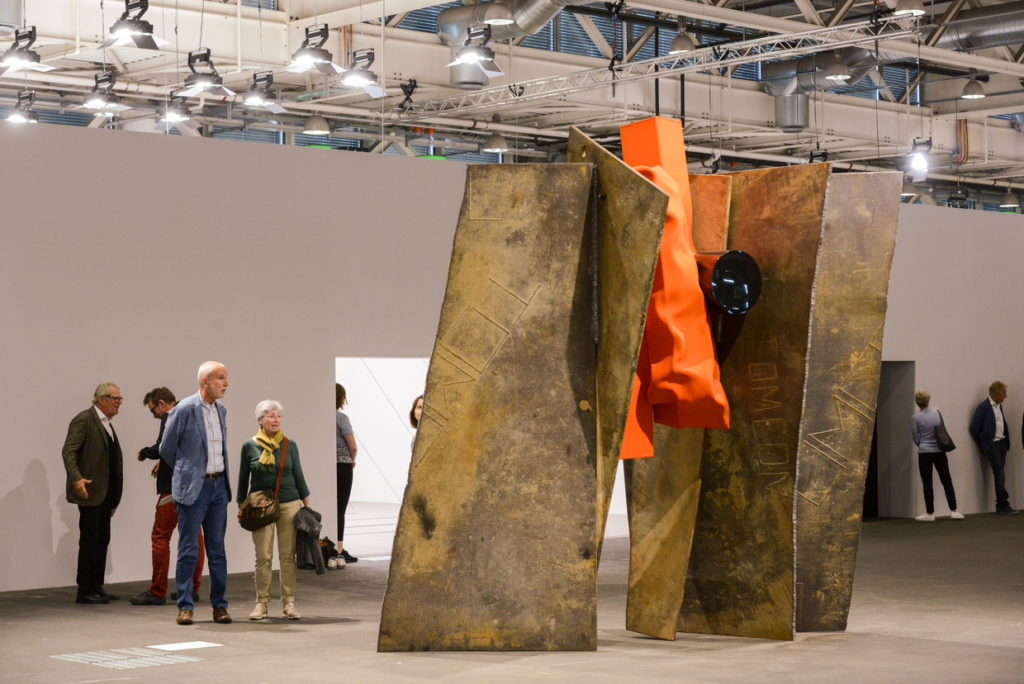
A work by Carol Bove presented by David Zwirner at Art Basel 2018. © Art Basel, 2018.
Origin Story
Art Basel began refining the new fee model this winter. Once the organization deemed it ready for review, the details were provided to the selection committee for Art Basel in Basel, as well as to several members of the Miami Beach and Hong Kong selection committees.
Spiegler also consulted with founders or partners of about 10 major international galleries—a quorum that included David Zwirner, Thaddaeus Ropac, Monika Sprüth of Sprüth Magers, Marc Payot of Hauser & Wirth, Paula Cooper Gallery’s senior director Steve Henry, and others. (Zwirner himself made headlines this spring when he volunteered to pay an art-fair “tax” to ease the burden on smaller galleries.)
Although all acknowledged that Art Basel’s proposal would not eliminate the systemic challenges facing smaller galleries, Spiegler says, “Everyone saw it as a step in the right direction.” He felt it was unnecessary to solicit as broad a range of opinions from Art Basel’s more modestly sized participants based on the fact that they will receive the largest benefits without making sacrifices in exchange.
In total, Art Basel states that two-thirds of exhibitors will pay less for their booths in 2019 than they did in 2018, and roughly 80 percent will pay less than if the organization had applied the usual flat-rate increase of five percent. Even the sellers subject to the heftiest increase will pay no more than an additional $10,000—a borderline-insignificant delta for a top-performing gallery.

A virtual reality work by Jacolby Satterwhite on view at Morán Morán Gallery at Art Basel 2018. Image © Art Basel.
Although the individual increase being paid by each major gallery is small, Spiegler still thinks their collective buy-in is unique. “I can’t think of many other industries where those who are the most established necessarily feel a duty and a willingness to help out those who are on the rise,” he says. Spiegler attributed this development to a mutual understanding that the gallery sector functions as a holistic ecosystem, in which the health of small, ascendant spaces directly affects the health of the heaviest hitters.
Despite news of recent financial woes at MCH Group’s BaselWorld watch fair, Spiegler says the same enlightened mentality demonstrated by the top-selling galleries was also reflected by Art Basel’s parent company. “Upper-level management [at MCH Group] was totally supportive of this approach because of what we explained about the art market right now and how important it is to help the younger galleries,” he explains. Augmented by the support of the veteran dealers with whom Art Basel consulted along the way, this line of thinking allowed the new fee structure to sail through the approval process.
In light of the industry’s recent frustrations over art-fair financials, it’s difficult to say what the reaction to Art Basel’s changes will be. Still, this new model is the first sweeping action taken by an international fair organizer. Its favorability rating may be determined less by the solution’s details than by the pure fact that Art Basel is doing something above and beyond simply acknowledging the gallery sector’s grand imbalance.
Follow Artnet News on Facebook:
Want to stay ahead of the art world? Subscribe to our newsletter to get the breaking news, eye-opening interviews, and incisive critical takes that drive the conversation forward.
